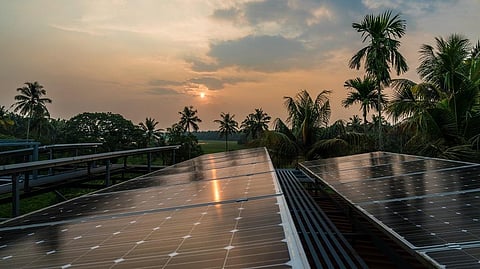

We often forget that energy is a critical enabler of lives and livelihoods in the pursuit of capacity targets. Distributed renewable energy is one such solution. It is designed for improving community welfare by providing electricity that can be utilised for income generation and sustainable jobs.
The Union Ministry of New and Renewable Energy (MNRE) released a draft policy framework February 14, 2022 for DRE livelihood applications. The ministry intended to achieve its objective of a decentralised and distributed renewable energy supply in the country, particularly for rural populations with little or no access to power.
In March of 2021, something similar was released. But it lacked clarity on end-user finance, which the new draft attempts to cover.
The main objectives outlined in the new framework are:
MNRE proposed forming a committee to monitor the progress of DRE projects, which will meet at least once every six months. Within the committee, each member ministry shall nominate the main point of contact for inter-ministerial collaboration, according to the draft.
Depending on the scheme being implemented on DRE livelihood application, the committee may co-opt additional ministries / departments as members. The draft says MNRE will make available a digital catalog of DRE-powered solutions to be used by various stakeholders to raise awareness.
In order to use renewable energy in their livelihoods, people need access to technology and financing. These technologies, however, are not available to most rural households in India despite the existence of several technology options to deploy small-scale renewable energy-based livelihood applications. Local communities In the villages often find it difficult to pay upfront for these innovations.
End-user and corporate financing would be essential for the DRE industry to scale up. Financial institutions may consider developing financing options that do not require collateral. Other state nodal agencies such as the state rural livelihood missions might use their existing institutional architecture to give financial assistance to the members of women self-help groups.
Microbusinesses, under-represented groups and women face unique challenges when it comes to acquiring assets. As a result, businesses that use operating expense-based financial models, such as pay-as-you-go or leasing, may be eligible for credit facilitation.
Both upstream and downstream livelihoods should be considered equally. Upstream livelihoods affect local manufacturing and technical service providers to design, install and maintain DRE systems. This leads to differentiating between DRE technologies to see what can actually be manufactured locally and providing capacity-building services to both newcomers and existing service providers.
Providing livelihoods for rural populations becomes important downstream as it involves all kinds of productive end-use.
To build the components cost-effectively in India, the demand should be higher. For that, the government needs to extensively promote awareness about the appropriate DRE technologies and related services among the relevant stakeholders.
Awareness campaigns will help in increasing trust and adoption of these products by end-users and financiers, as these technologies are new for many consumers.
The increased demand will further create new jobs in operations and maintenance, as well as installation and manufacturing. These operations will necessitate well-trained human resources across the country.
The availability of skilled personnel will also contribute to improving product trust for customers and lenders. With their potential to create long-term jobs, the promotion of DRE livelihoods applications becomes increasingly important.
Lack of proper financing channels, consumer awareness, consumer affordability and quality products / standards are some of the major challenges facing DRE in India. It will be worth tracking the schemes that follow the framework carrying direct fiscal allocations, targets and incentives.
An increase of $18 billion in annual investments is needed by 2024 to scale up DRE deployment in India, according to Climate Policy Initiative, an international climate think tank. Unless we roll out policy schemes subsequent to this framework, such investments are unlikely.